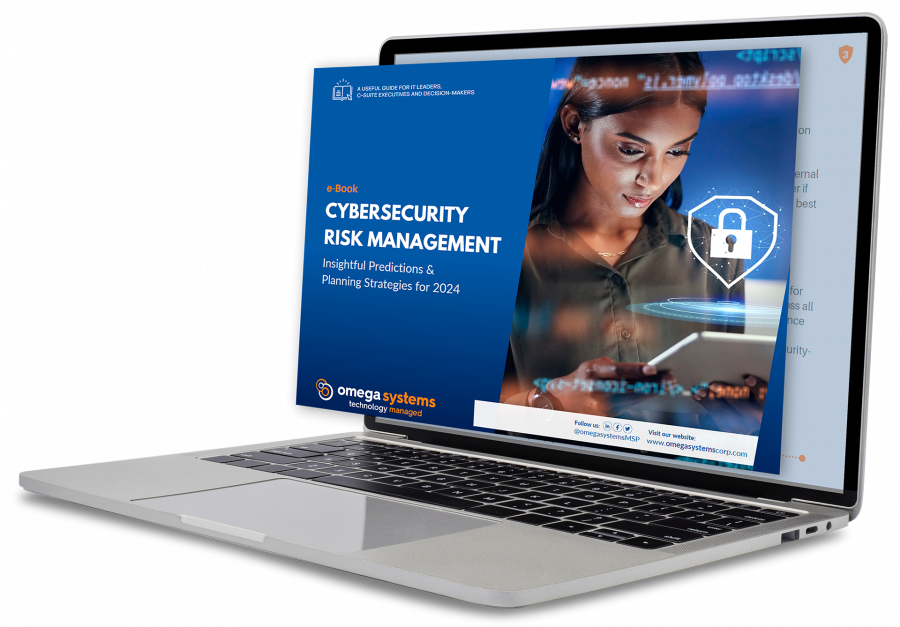
There is a growing market for cyber liability insurance – which can cover financial losses from cyber incidents, such as legal fees, operational losses and data recovery costs. But with each new breach, intrusion or data leak, insurers increase their expectations and demand more from businesses’ risk management programs in order to secure coverage.
Whether you’re applying for cyber insurance for the first time or renewing your current policy, you need to validate that your cybersecurity program has been designed with balanced investments toward both preventive and responsive security controls.
In this article, we’ll help you understand some of the key cybersecurity controls insurers are looking for and explain why implementing multi-layered cyber protection can not only reduce the likelihood of costly data breaches but also set your organization up for success in securing better coverage and lower premiums.
Cyber Liability Insurance Requirements Checklist
Cybersecurity insurance underwriters perform a series of risk assessments to determine your overall insurance eligibility as well as your premium costs. These evaluations will vary based on the size of your business, the industry you operate in and the level of protection your organization requires. For example, a startup with a minimal online presence may enjoy lower premiums than a corporation with substantial online activities. Similarly, high-risk industries like healthcare and finance with significant exposure to sensitive data can generally expect higher premiums.
Cyber insurance standards have dramatically increased in recent years as more businesses have fallen victim to breaches, resulting in the release or compromise of personal or sensitive data. For this reason, brokers require companies to meet the following fundamental IT security standards to qualify for cyber liability insurance. How many can you cross off your list?
-
Vulnerability Management
Preventive cybersecurity begins with vulnerability management. This involves continuously identifying, evaluating and remediating weaknesses across your systems and infrastructure before threat actors can exploit them. Cyber insurance providers require organizations to adopt a vulnerability management framework that will enable them to swiftly identify and patch security flaws. Regular vulnerability assessments examine your entire attack surface – including endpoints from workstations, mobile devices and servers to databases, firewalls, switches, and beyond – and help you ensure your security controls remain effective against both internal and external vulnerabilities. To gain insight into your vulnerability profile, ask your managed service provider (MSP) for a copy of your vulnerability report, or contact The TNS Group today to schedule a vulnerability assessment.
-
Security Awareness Training and Testing
Human error remains the ultimate vulnerability in cybersecurity programs. You can surround your environment with the finest technical defenses in the market, but an individual’s momentary confusion, fatigue or error in judgment can potentially thwart or compromise your technical controls. Raising security awareness and vigilance through ongoing training is necessary for any company aiming to succeed in the digital age. It is essential to educate and remind employees about the critical role they play in cybersecurity risk management. Seasoned IT service providers can automate this vital process and deliver routine security reminders and hyper-realistic phishing simulations to battle-test your users against current threats that haunt the web and their inboxes.
-
Third-Party Risk Management
Outsourcing certain front, middle or back-office functions can provide significant benefits to your business, but any reliance on a third party can also introduce an additional layer of risk into your environment. Cyber liability insurance providers expect thorough due diligence and ongoing vendor risk management and will expect your organization to demonstrate that you have a comprehensive plan to mitigate third-party vendor risk.
Cyberattacks are not always directed at the people within your organization. Savvy hackers continuously hunt for alternative entry points to steal your data, automating the process for their success and convenience. Instead of directly targeting your security-trained employees, cybercriminals can phish your suppliers, consultants or partners, capitalizing on their lack of strict cybersecurity policies to gain entry to your systems. These third-party attacks or supply chain attacks have been picking up steam, rising by 742% since the onset of Covid.
Before entering into a new partnership with a third party, take the time to examine the other party’s security practices. An in-depth understanding of your providers’ security measures can help you strengthen your company’s overall security posture.
-
Access Management and Control
Insurance eligibility requirements also include keeping track of permissions to access company resources – especially private data. This involves the implementation of the so-called principle of least privilege. Enforcing this principle regulates your employees’ and third parties’ access to sensitive resources, allowing them the bare minimum access necessary to complete their tasks. This best practice prevents misuse of sensitive data, deters the spread of malware and keeps hackers from wreaking havoc on your network. Managing user permissions will not only help you qualify for cyber insurance but also get you one step closer to your industry-specific compliance standards.
Compliance regulations that require data privacy protection include:
- Health Insurance Portability and Accountability Act (HIPAA) in the healthcare industry
- Financial Industry Regulatory Authority (FINRA) in the brokerage and exchange markets
- Gramm-Leach-Bliley Act (GLBA) in the banking and financial services sector
-
Password Management and Multi-Factor Authentication
Another critical component of access control is multi-factor authentication (MFA). In the wake of many high-profile cyberattacks, usernames and passwords have proven grossly inadequate on their own. As such, most cyber insurance providers now require the use of MFA for new or renewal coverage.
MFA is one of your organization’s most potent (and cost effective) tools to minimize account-compromising attacks. It augments the heavily exploited username-password verification method by requiring additional authentication factors, such as a biometric identifier, a knowledge-based factor or a push notification sent to a recognized device. Ensuring vendors, partners, remote workers and everyone else in your company adhere to your MFA protocol can significantly lower your risk of a data breach. In today’s hybrid workplace model, MFA is a requirement – not an option.
Some cyber insurance providers may even require zero trust security controls – which take MFA a step further and require all users both within and outside an organization’s network to continuously authenticate and authorize permissions before gaining access to the network and its resources.
-
Cloud Backup and Recovery
Today’s digital economy is powered by data, and when data is deleted, corrupted, compromised or stolen, every minute counts. Operational downtime due to data loss costs smaller organizations thousands of dollars per hour and larger companies millions until the problem is resolved. The lack of an adequate data backup system can not only prevent you from securing effective cyber insurance, but it can shut down your business: a study shows that 60% of small enterprises that lose their data are forced to shut down within six months.
Now more than ever, it is necessary to build digital resilience by securing your backups. For maximum protection, look for a backup and recovery option that takes a hybrid approach and secures your backups both on-premise and on a cloud-based remote server to help you rapidly resume operations in the event of a disaster or disruption.
-
Incident Detection and Response
Your cybersecurity incident response plan should be purpose-built and regularly updated to rapidly detect, investigate, respond to and remediate all cyber incidents in the aftermath of such events. This can be an arduous task that even large enterprises will need help to execute. To effectively combat today’s evolving threats, you need the support of IT security professionals with access to round-the-clock resources, next-generation technology and AI-powered capabilities. To demonstrate strong, proactive cybersecurity protections, insurance providers may ask about a Security Operations Center – a dedicated team responsible for 24x7 security monitoring and incident response. Premier MSPs and MSSPs can act as your SOC, freeing up your time and resources and implementing proactive threat protections to keep malicious threats out of your network.
Failing to Meet Cyber Insurance Criteria
It’s also important to be aware of the potential fallout associated with not meeting certain insurance criteria. Companies may choose to misrepresent their security practices or programs in order to secure better coverage. Other organizations may overhaul their security practices initially in the hopes of improving their coverage and lowering their premiums, only to abandon said strategies during the course of their policy.
Both scenarios are ill-advised and considerably risky. Recent statistics on cyber liability insurance revealed that 27% of data breach claims and 24% of first-party claims resulted in partial-payout or non-payout due to specific exclusions within the policy. These percentages are predicted to rise in the coming years as cyberattacks increase in sophistication and insuring cyber risk becomes more and more complex.
Without proactive, ongoing cybersecurity measures in place, it is only a matter of time before your business falls victim to a damaging cyberattack. And unfortunately, your insurance coverage will not save your business from certain financial losses and reputational damage if you cannot prove the existence of adequate preventive and responsive security strategies.
If you’re looking to bolster your security program to aid in your cyber insurance process, contact our security experts at TNS to get started.
EDITOR’S NOTE: This article was originally posted by Omega Systems. The TNS Group joined the Omega Systems family in December 2022.
Categories: Business Continuity Service, Cloud Managed Services, Managed Security Services, Solution Blogs




